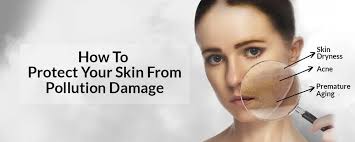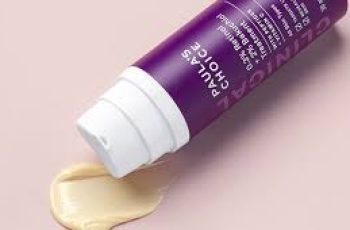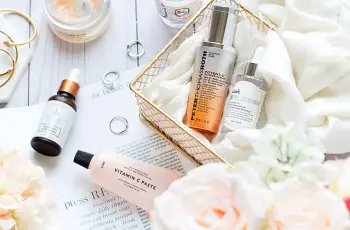
How Pollution Affects Your Skin — And What You Can Do About It
Pollution isn’t just bad for the environment—it wreaks havoc on your skin too, often in ways you don’t even notice until dullness, irritation, or fine lines begin to show.
With so many of us living in urban areas, our skin is under constant attack from airborne toxins, dust, and exhaust fumes that penetrate deep into its surface.
The rising concern over pollution and its effect on skin health is no surprise, as more people seek out products that promise to shield and restore their complexions.
Fortunately, you don’t have to move to the mountains to escape it—you can arm your skin with the right habits, ingredients, and protection to fight back every single day.
What Is Air Pollution and Why Should You Care About It?
Air pollution refers to tiny, invisible particles and gases released into the environment from things like car exhaust, smoke, construction, and even indoor air sources.
While these pollutants may be invisible to the eye, they’re small enough to seep into your pores, damaging skin cells and accelerating the signs of aging before you even notice.
The most dangerous forms of pollution include particulate matter, nitrogen dioxide, ozone, and polycyclic aromatic hydrocarbons—all known to harm both skin and lungs.
These particles cling to your skin’s surface, but their microscopic size allows them to penetrate the skin barrier, causing clogged pores, uneven tone, and long-term inflammation.
The skin barrier acts like armor, but even the best shield can weaken over time, allowing these invaders to sneak in and leave behind damage you may not see right away.
How Pollution Impacts the Skin on a Cellular Level
Once inside the skin, pollution creates a chain reaction called oxidative stress—an imbalance between free radicals and your body’s ability to neutralize them with antioxidants.
Free radicals are unstable molecules that steal electrons from healthy skin cells, damaging DNA, breaking down collagen, and depleting your skin’s natural defenses.
This results in visible issues like dark spots, dryness, fine lines, sagging, enlarged pores, and that all-too-common tired, lackluster complexion we blame on late nights.
In more sensitive skin, oxidative stress can trigger flare-ups of rosacea, eczema, and allergic rashes, making already irritated skin even more reactive to environmental triggers.
The longer your skin is exposed to pollution without proper protection, the more cumulative the damage becomes—and the harder it is to reverse the effects completely.
Skin Concerns Triggered or Worsened by Pollution
Overexposure to pollution can trigger a wide range of problems that affect both appearance and skin health, especially if your skincare isn’t built to protect and restore.
These include pigmentation issues like dark spots or uneven tone, which occur when pollution overstimulates melanin production in the skin, leading to discoloration.
Your pores may appear enlarged or more visible due to buildup of dirt and oil trapped beneath the surface, causing bumps, blackheads, or recurring acne breakouts.
Irritation such as redness, flakiness, or burning sensations can appear, especially in dry or sensitive skin types that lack sufficient natural oils to form a strong barrier.
Long-term exposure accelerates the aging process, leading to premature fine lines, wrinkles, and sagging caused by pollution-related collagen and elastin breakdown.
Even conditions like eczema or rosacea may worsen in polluted environments due to constant inflammatory stress that throws your skin’s equilibrium out of balance.
How to Protect Your Skin from Pollution—Step by Step
Pollution might be impossible to avoid completely, but there’s plenty you can do to counteract its effects with the right routine and a few targeted skincare ingredients.
Think of your skin like armor—it needs daily maintenance, strategic reinforcements, and a proper cleansing ritual to defend itself from toxins in the environment.
Here’s a proven five-step routine to protect your skin, restore its balance, and help it thrive—even in the middle of a smog-filled city.
Step 1: Deep Cleansing
The first and most important step in fighting pollution is cleansing—really cleansing—not just a quick swipe with a makeup wipe before bed.
Begin by thoroughly removing makeup, sunscreen, and surface grime using a gentle balm or oil cleanser to dissolve stubborn particles without stripping the skin.
Follow that with a water-based cleanser containing gentle exfoliants like alpha hydroxy acids (AHAs) or fruit enzymes to lift away deeper residue and dead skin.
Ingredients like glycolic acid or lactic acid not only cleanse, but also improve skin texture, fade dark spots, and encourage healthy cell turnover from beneath the surface.
Avoid harsh cleansers that leave your skin tight or squeaky—this signals barrier damage and can make your skin more vulnerable to pollution the next day.
Step 2: Exfoliate—But Do It Wisely
Exfoliation removes lingering dead skin cells and pollutants that even double cleansing may miss, giving your skin a renewed, brighter appearance.
You can choose a chemical exfoliant like a toner with lactic or salicylic acid, or a gentle manual scrub—but avoid using both at the same time to prevent irritation.
Exfoliating 2–3 times per week is usually enough for most skin types; more than that may cause redness, dryness, or damage to the skin’s delicate surface layers.
Well-exfoliated skin absorbs serums and creams better, meaning your antioxidants and moisturizers will work more effectively at protecting your skin long term.
Step 3: Add Antioxidants to Your Routine
Antioxidants are your skin’s frontline defense against pollution—they neutralize free radicals before they can cause damage, aging, or inflammation.
Vitamin C is one of the most effective antioxidants available, especially in serum form where it can deeply penetrate the skin and boost collagen production.
Other great options include niacinamide, resveratrol, ferulic acid, and green tea extract—all known to calm inflammation and protect against oxidative stress.
Apply antioxidant serums in the morning before moisturizer and SPF to create a pollution-fighting barrier that lasts throughout the day.
At night, using antioxidant-rich moisturizers or sleeping masks can help repair any damage done during the day and strengthen your skin for tomorrow’s exposure.
Step 4: Hydrate and Seal with Moisturizer
A well-moisturized skin barrier is a strong skin barrier—hydration helps your skin defend against environmental toxins by keeping cells plump and resilient.
Use a moisturizer that includes ingredients like hyaluronic acid, glycerin, ceramides, or panthenol to hydrate and repair the outermost skin layers.
Moisturizing twice daily—morning and night—is non-negotiable when facing environmental stressors like wind, smog, or dry indoor heating.
Healthy, hydrated skin reflects light better, looks more even in tone, and is less prone to redness or reactivity after spending the day outdoors.
Step 5: Always Wear SPF (Yes, Even in the City)
Pollution and UV rays are partners in crime—together they speed up aging, increase inflammation, and destroy collagen more quickly than either could on their own.
Wearing a broad-spectrum SPF 30 or higher every day (yes, even when it’s cloudy) helps block both UVA/UVB damage and makes it harder for pollutants to penetrate.
Some sunscreens now include anti-pollution ingredients like vitamin E or iron oxides that help protect against urban stressors beyond just the sun.
Reapply every two hours if you’re outside or exposed to sunlit windows for extended periods, and don’t forget often-missed areas like your neck and hands.
Can Makeup Protect Your Skin from Pollution?
Surprisingly, yes—many foundations and BB creams act as a physical barrier that helps block pollution particles from settling directly on your skin.
Pigments and minerals in makeup can reflect light and protect against oxidation, while some modern formulas even include SPF and skin-loving antioxidants.
However, makeup is not a substitute for a proper skincare routine—you must remove it thoroughly every night to avoid clogged pores and trapped toxins.
Sleeping in makeup, especially in polluted environments, increases the risk of breakouts, irritation, and early signs of aging caused by skin barrier breakdown.
So by all means, use your foundation as an extra layer of defense—but always double cleanse before bed and follow up with nourishing treatments.
The Takeaway: Pollution Is Inevitable—But Damage Doesn’t Have to Be
We can’t eliminate pollution from our daily lives, but we can give our skin the tools it needs to stand strong and repair itself when the damage is done.
By adopting a thoughtful, antioxidant-rich skincare routine and taking small daily steps, you can maintain a youthful, glowing complexion—even in the most polluted cities.
The key is consistency—cleansing, protecting, and nourishing your skin every day adds up over time, minimizing the long-term effects of environmental exposure.
Healthy skin is resilient skin, and with the right habits in place, you’ll find yourself glowing even when the air around you is less than perfect.


